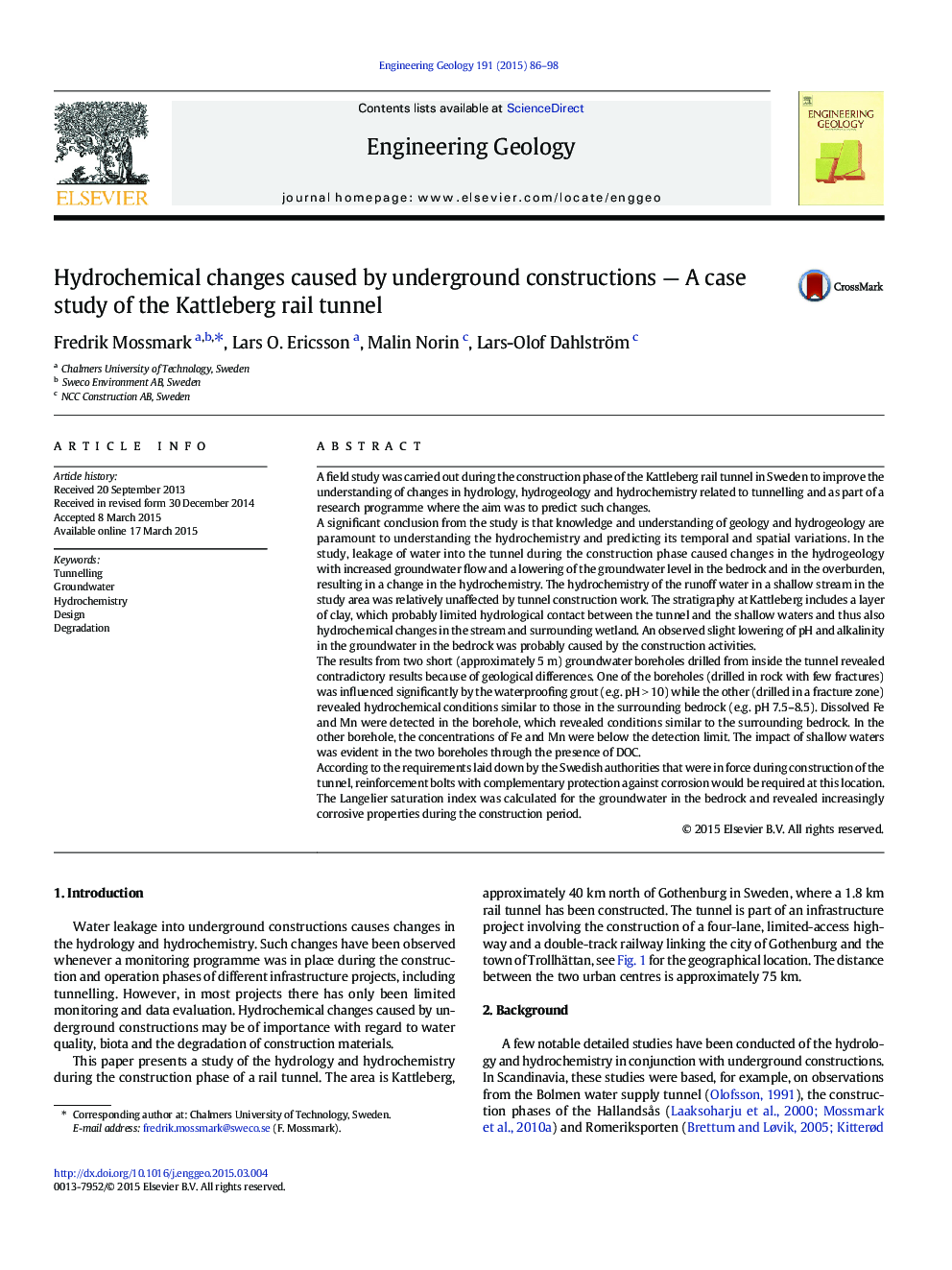| کد مقاله | کد نشریه | سال انتشار | مقاله انگلیسی | نسخه تمام متن |
|---|---|---|---|---|
| 4743380 | 1641794 | 2015 | 13 صفحه PDF | دانلود رایگان |

• This paper presents a case study of groundwater and hydrochemistry during tunnelling
• Hydrochemical changes and the ensuing recovery in conjunction with construction
• Implications for the durability of cement and steel as construction materials
A field study was carried out during the construction phase of the Kattleberg rail tunnel in Sweden to improve the understanding of changes in hydrology, hydrogeology and hydrochemistry related to tunnelling and as part of a research programme where the aim was to predict such changes.A significant conclusion from the study is that knowledge and understanding of geology and hydrogeology are paramount to understanding the hydrochemistry and predicting its temporal and spatial variations. In the study, leakage of water into the tunnel during the construction phase caused changes in the hydrogeology with increased groundwater flow and a lowering of the groundwater level in the bedrock and in the overburden, resulting in a change in the hydrochemistry. The hydrochemistry of the runoff water in a shallow stream in the study area was relatively unaffected by tunnel construction work. The stratigraphy at Kattleberg includes a layer of clay, which probably limited hydrological contact between the tunnel and the shallow waters and thus also hydrochemical changes in the stream and surrounding wetland. An observed slight lowering of pH and alkalinity in the groundwater in the bedrock was probably caused by the construction activities.The results from two short (approximately 5 m) groundwater boreholes drilled from inside the tunnel revealed contradictory results because of geological differences. One of the boreholes (drilled in rock with few fractures) was influenced significantly by the waterproofing grout (e.g. pH > 10) while the other (drilled in a fracture zone) revealed hydrochemical conditions similar to those in the surrounding bedrock (e.g. pH 7.5–8.5). Dissolved Fe and Mn were detected in the borehole, which revealed conditions similar to the surrounding bedrock. In the other borehole, the concentrations of Fe and Mn were below the detection limit. The impact of shallow waters was evident in the two boreholes through the presence of DOC.According to the requirements laid down by the Swedish authorities that were in force during construction of the tunnel, reinforcement bolts with complementary protection against corrosion would be required at this location. The Langelier saturation index was calculated for the groundwater in the bedrock and revealed increasingly corrosive properties during the construction period.
Journal: Engineering Geology - Volume 191, 29 May 2015, Pages 86–98